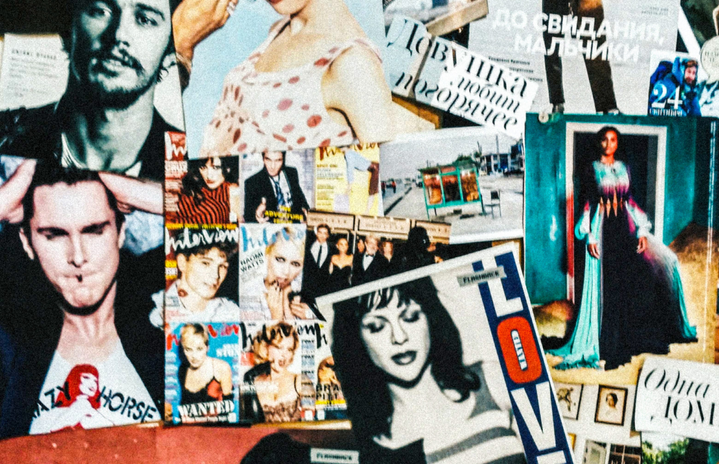The Twenty-Year-Rule states that trends live on a cycle of twenty years, waiting that period of time before experiencing resurgence. For those twenty years in between initial popularity and its recurrence, the trend is deemed outdated. It is only when the new generation adopts the predated styles that it becomes acceptable again.
It is possible that it takes a generation to redeem old styles because it was those styles that were worn by the celebrities of the new generation’s childhood. The new generation of teenagers, reaching a certain age, are now permitted to dress like the idol they looked up to as kids. When the 1990’s came back into popularity, it was the millennials that championed the recycled trends. During the last breaths of the 2010’s, the millennials were influenced by the grunge of the 1990s, pushing chokers, combat boots, and flannels back into style.
Now, it is Gen-Z’s turn to shape the course of fashion.
The covid era symbolized the passing of the fashion baton from the millennials to Gen-Z. The time out of the real world and the inhabitation of the internet, especially TikTok, allowed for a new culture surrounding trends to surface. The young generation of today have collectively chosen to adopt the styles of the Y2K era, adhering to the trends throughout the early 2000’s.
Over the past two years, high rise pants have been traded in for ultra lowrise jeans and miniskirts; the “Rachel” haircut has been swapped for “Wolf Cuts”; and heavy face makeup has been wiped off to reveal the “Clean-Girl” look.
Global fashion brands, who traditionally don’t follow the pack when it comes to trends, have taken inspiration from the early aughts. Mui Mui’s Spring 2022 cargo miniskirt and Bluemarine’s Spring 2022 collection incorporated butterflies, gem-stones, and bubble-gum pink. All are emblematic of the invasiveness of the decade obsessed culture.
Although these early 2000’s styles have had some staying power, there are clear signs that the Y2K glitter will be washed away within the next few months.
While the Twenty-Year-Rule has stayed true to real life for many decades, the invention of social media has quickened its pace, turning over trends like pages of an outdated magazine. When a trend no longer maintains its audience’s attention, it is disposed of with no promise of its return. The internet and real world are oversaturated with the revival of Y2K and Gen Z is looking for new (or old) inspiration.
Y2K is done, leaving only one option for fashion: to turn towards the next tick of the trend timeline.
Fueled by girlfriends of the band, smudged eyeliner, and the unabashed walk of shame, “Indie Sleaze” reigned supreme from 2006 to 2013. This time period was centered around party-culture, which was represented by the grudgy, effortlessly cool persona of its participants. Kate Moss and Alexa Chung (and her boyfriend, Alex Turner of the Arctic Monkeys) were the champions of this late-night scene. It is not only that “Indie Sleaze” fashion chronologically makes sense, but what the era culturally represents is what makes this guess almost certain.
The “Indie Sleaze” era represents much more than just fashion, it represents a lifestyle that exceeds the formal definition of life. Locked up for a most formative part of their youth, Gen Z is craving a life full of excitement. This sentiment is seen in the 2021-2022 college application trends. New York University saw over a hundred-thousand applicants–a record for the university– this past year, sharpening their admission rate from 15%, the year previous, to 12.2%. This migration to the most bustling city in the world represents Gen-Z’s need to make up for their lost time and more importantly, it represents the return of “Indie Sleaze” who’s metropolitan backdrop provides Gen-Z the scenery to fuel their new, aspirational lives.
Additionally, this past week kicked off New York Fashion Week where notorious elements of Indie Sleaze fashion were included into many collections. Fendi was the most notable with ballerina leg warmers finding a way into most looks and an overall abundance of dark color schemes. Another fashion brand taking inspiration was Marni, who interestingly reworked the now cringey floral skater skirt craze of the 2010’s into a stunning mini dress that sways with the wearer.
Fashion isn’t the only indicator that 2013 will see a rise in popularity. Photography, especially on social media, is noted to change back to the low production and overly exposed styles of years past. A recent campaign for the collaboration between Adidas , Praying (a clothing company known for simple, yet edgy print on their items), and Addision Rae, famous TikToker and influencer, was created with this raunchy, off-guard style of photography. This photo trend is also seen in celebrities’ Instagram feeds. Gigi Hadid’s recent post, taken by her sister, Bella Hadid is synonymous with the flash photography of the Indie Sleaze. Coincidentally, Cobrasnake, a celebrity photographer from this infamous time period has just released a collection of their pictures for sale.
Although, all signs are pointing towards the resurgence of the Indie Sleaze trend, there are significant periods of fashion that will altogether be ignored.
Gen-Z is most definitely entrenched into a maximalist mindset for the 2020’s, which lends a hand to Y2K microtrends that must be reexperienced. Candy Raver, Scene, and Twee are the “diversified aesthetics” that emerge following the original Y2K. However, one mode of fashion that is overlooked, maybe for its emphasis on minimalism, is the Boho-Grunge era that took place in the mid-2000’s that predates Indie Sleaze. Mary-Kate and Ashely Olsen were pioneers of this laidback look, sporting flowy, ruffled dresses paired with ripped black tights and slouchy ankle boots.
For the average Gen-Z college student, this is the style to turn to. Instead of following the pack and sticking to overdone Y2K styles and/or prematurely donning “Indie Sleaze.” College students should embrace the Twenty-Year-Rule and stick to the styles that line up most with the timeline, or don’t. It’s fashion. It’s supposed to be fun.


